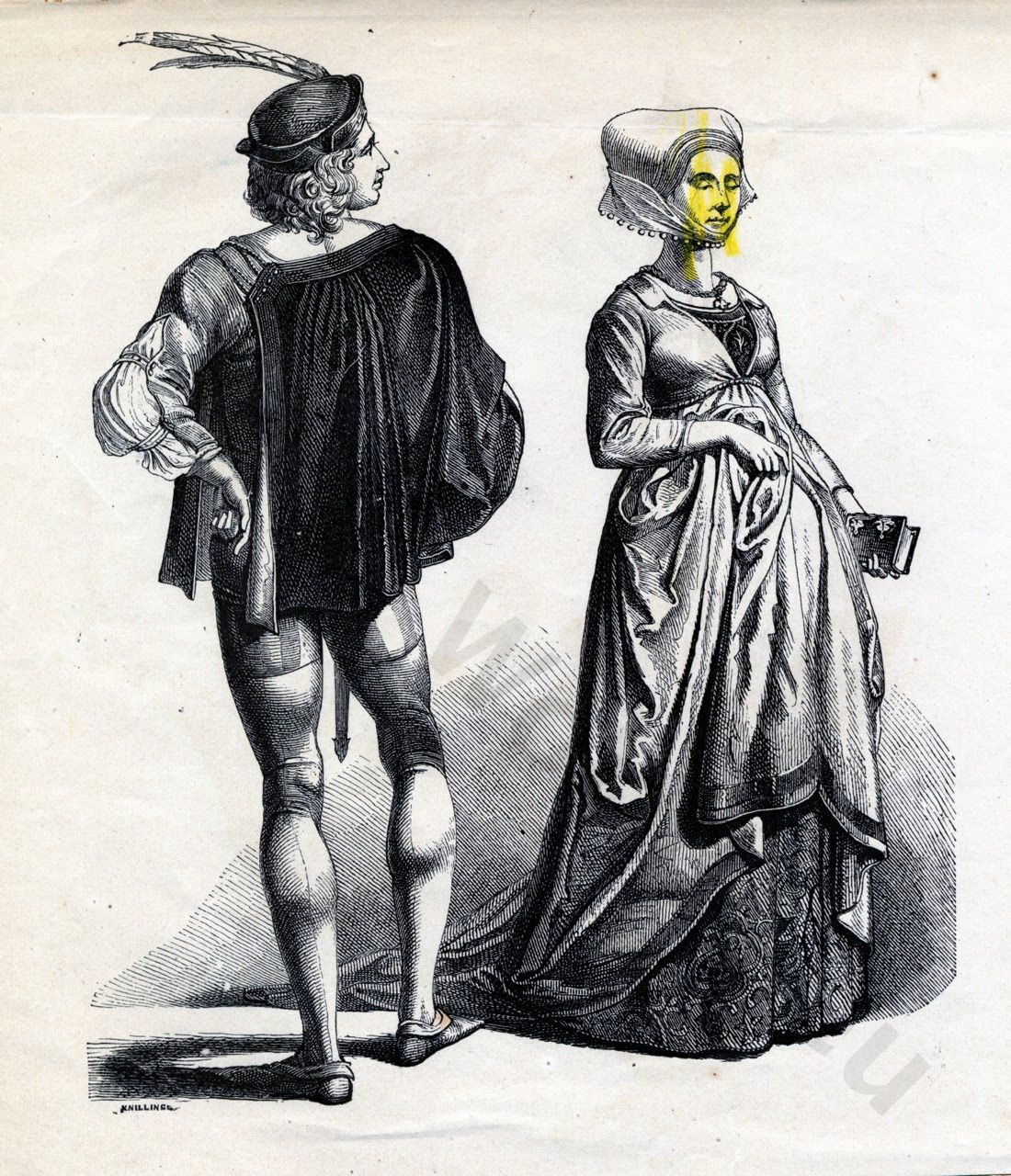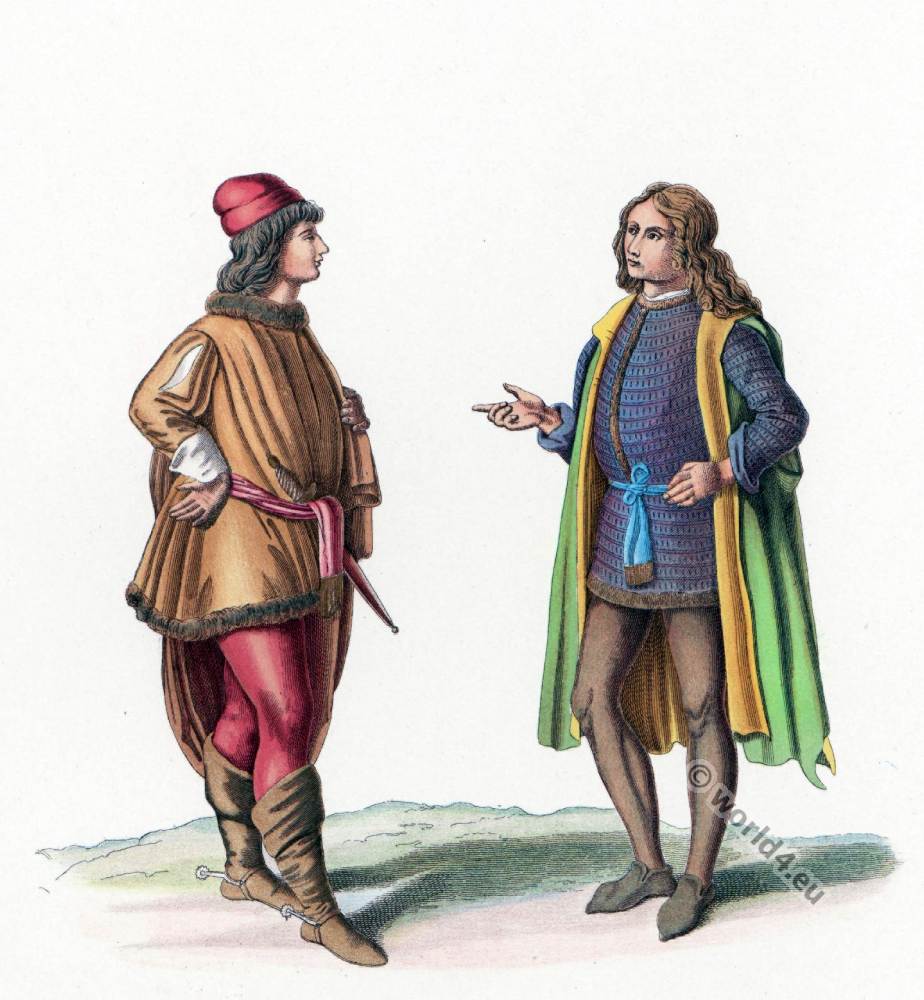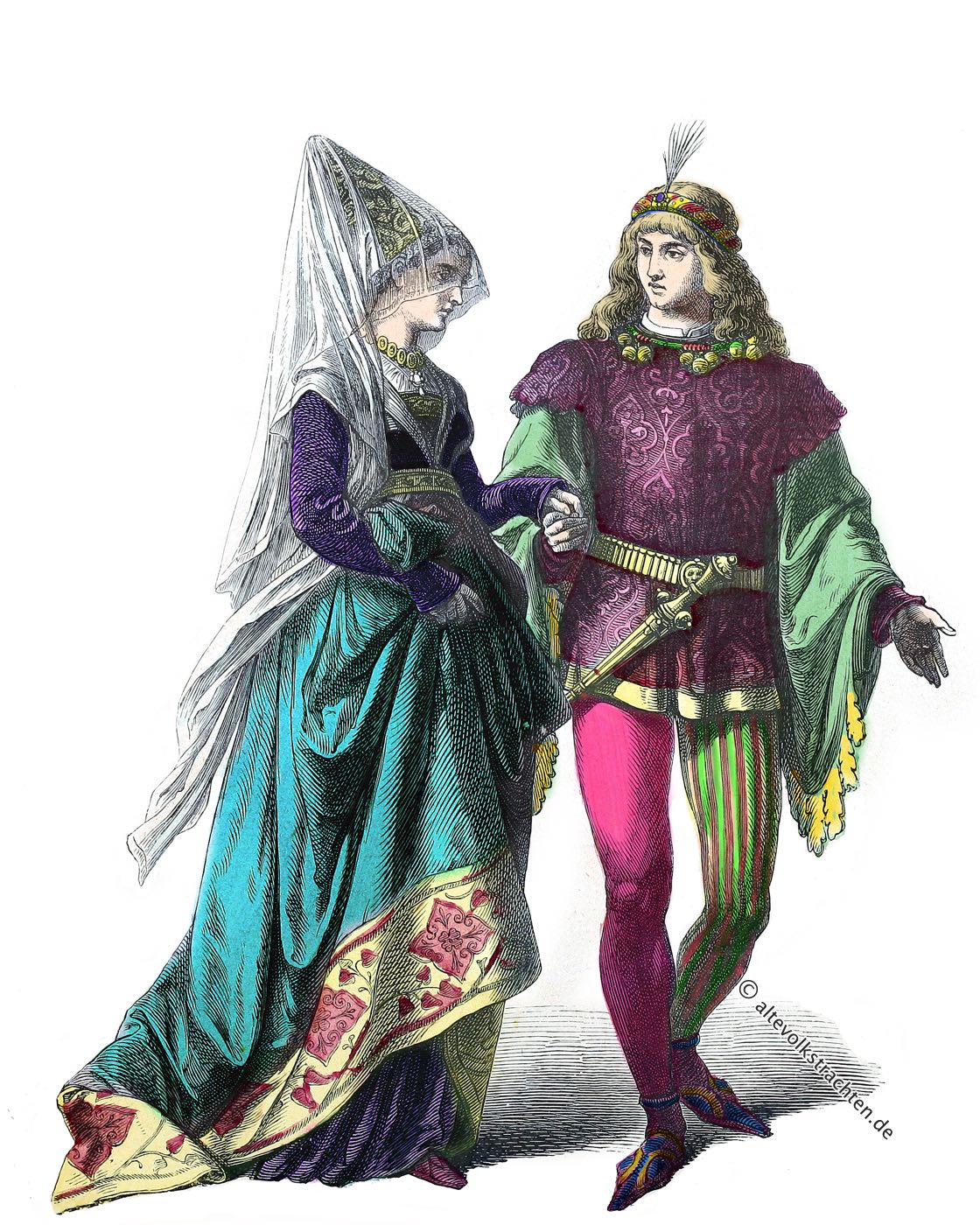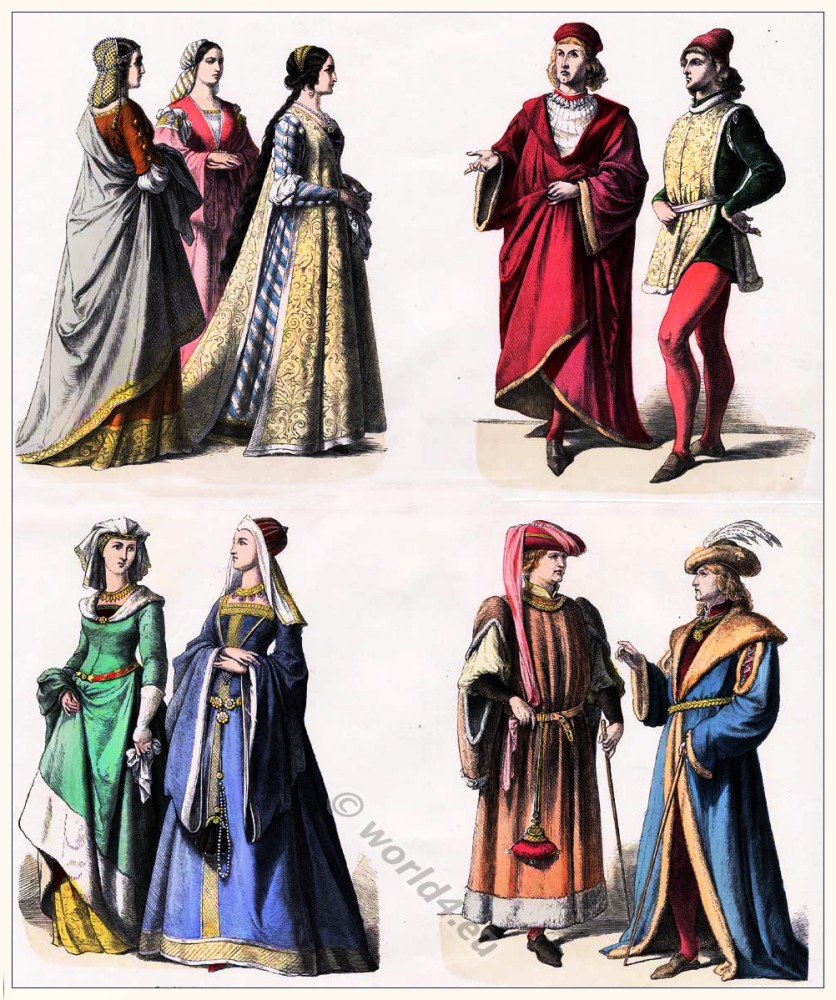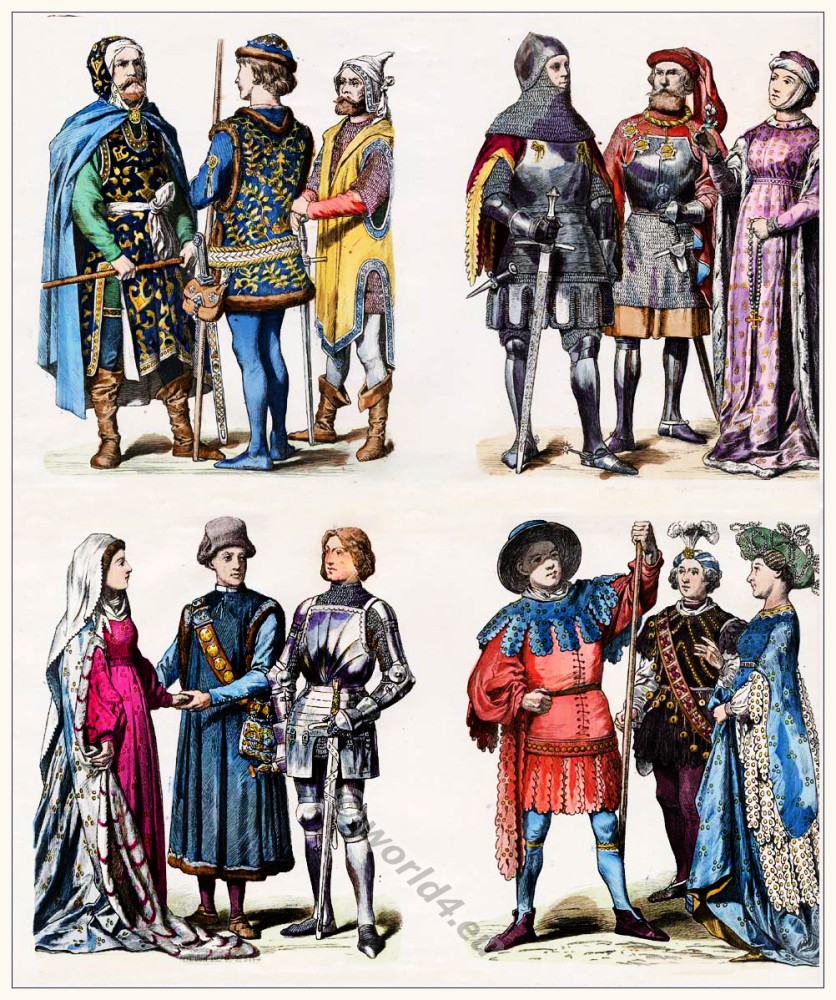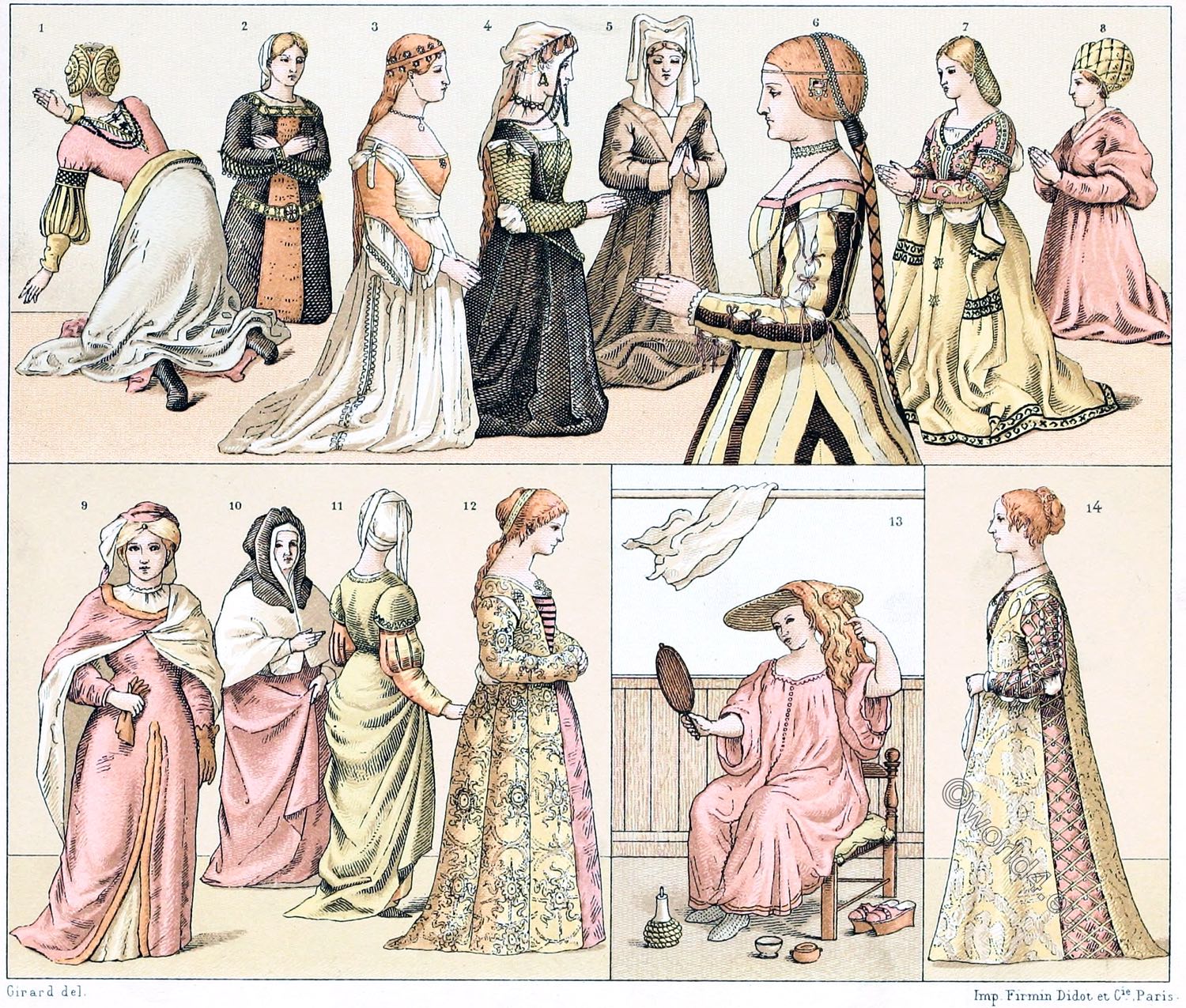
Italian princes in the fashion of the 15th century.
Italian costumes from the first half of the XVth century, after a group of figures from a painting of the Italian school in the royal collection of paintings in Berlin. It is described as follows by the museum director: Paintings by Antonio Vivarini, student of Andrea da Murano and his pupil Bartolomeo Vivarini. The Divine Child is venerated by the three holy kings and their numerous entourage, etc.
The figures on this and the following panel are taken from this painting. What is unusual about this work of art are the raised ornaments, vessels and various other details. These are executed in the bolus technique (poliment), whereby gold leaf is applied to a specially prepared clay and allows the gold to be polished to a high gloss using agate stones.
The artist depicted the three Magi and their retinue in the costume of his contemporaries, a faithful representation of Italian princes and their court. In many Italian works of art of this period the then current fashion of costume was reproduced. In the costume book of Cesare Vecellio *) a figure is depicted which is very similar to the young man with the falcon. His title is “Un Barone antico”.
*) Cesare Vecellio (ca. 1521 – ca. 1601) was an Italian engraver and painter of the Renaissance who worked in Venice.
The foremost figure in the first picture, shows one of the three holy kings in the costume of an Italian prince. He is wearing an overdress, to which the sleeves of the same fabric are loosely attached and join the edge of the skirt hem at the bottom. The man in the middle wears a leather box with embossed ornamentation, on a strap, into which the golden vessel that the king holds in his hand belongs. The herald with the trombone appears in the clothes of a distinguished Italian.
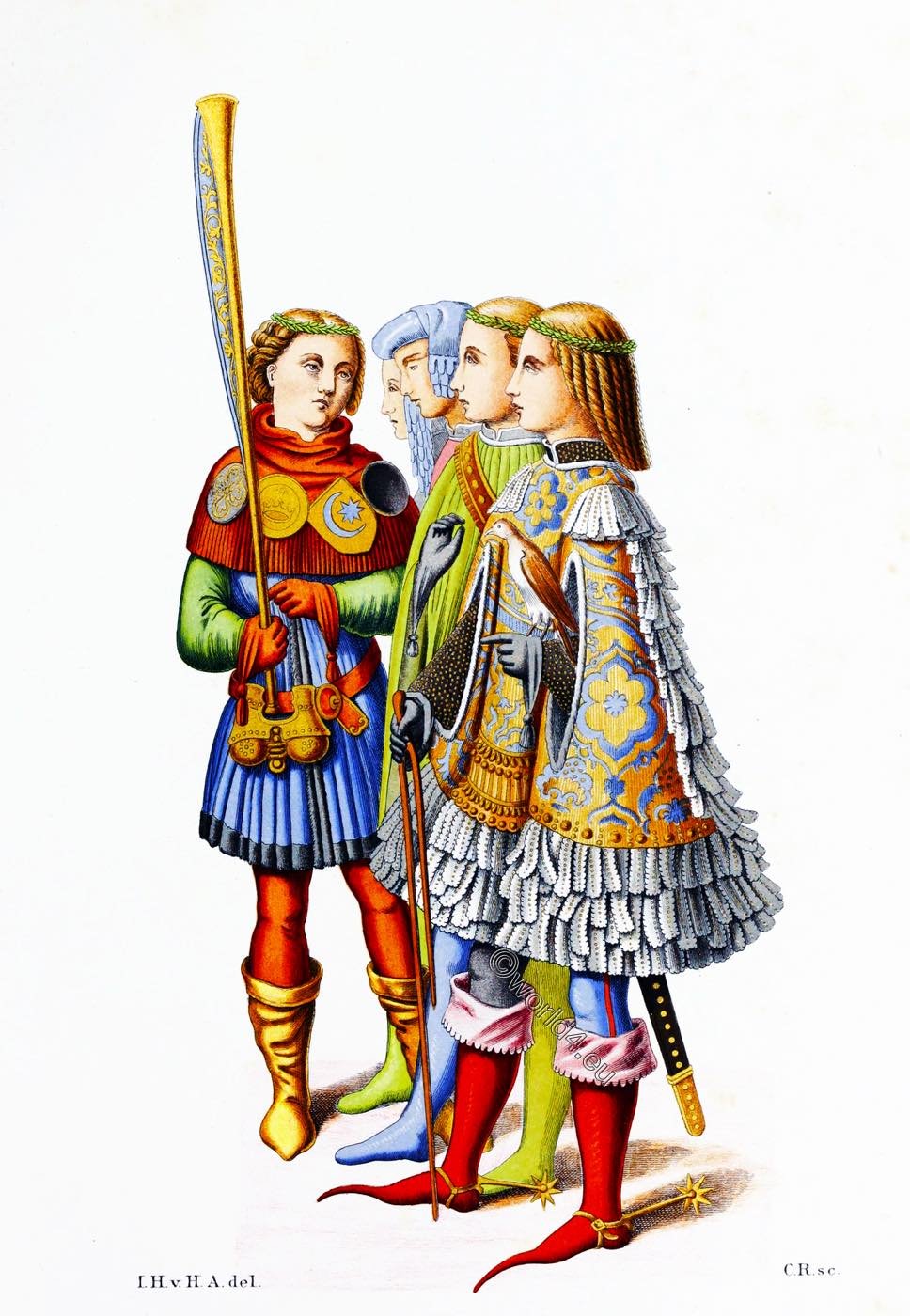
Italian herald and squires in saddles and bell costume.
The group of distinguished Italian noblemen in this picture consists of a herald and four squires in precious robes. The type of cloaks is a peculiarity of the Italian nobility of that time, with the decoration of the robes with coloured lobes, the so-called saddles and bells, the wearing of the poulines or Crakow shoes, and the fashion of the Mi-Parti prevailing in all European countries around the 16th century.
Source: Traditional costumes, works of art and tools from the early Middle Ages to the end of the eighteenth century, after simultaneous originals by Dr. J. H. von Hefner-Alteneck. Published by Heinrich Keller. Frankfurt a. M. 1879-1889.
Related
Discover more from World4 Costume Culture History
Subscribe to get the latest posts sent to your email.

